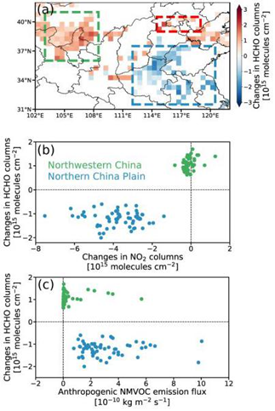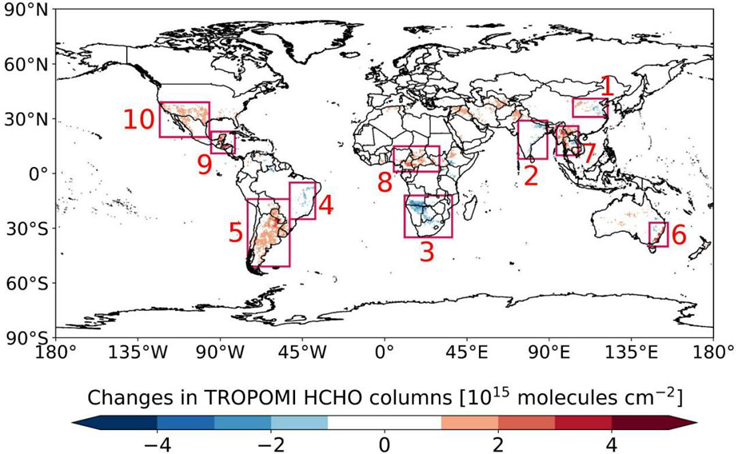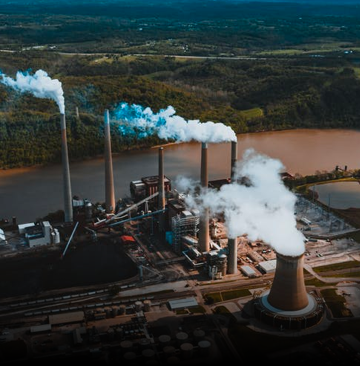SUSTech Lei Zhu's group observes significant changes in formaldehyde columns at the early stage of the COVID-19 pandemic from space
Recently, Lei Zhu’s research group from the School of Environmental Science and Engineering (ESE) at the Southern University of Science and Technology (SUSTech) published a paper titled “Global Significant Changes in Formaldehyde (HCHO) Columns Observed from Space at the Early Stage of the COVID-19 Pandemic” in Geophysical Research Letters, a top journal in the field of geosciences. It reports on the significant changes and causes of global formaldehyde columns in the early stages of the COVID-19 pandemic.

Satellite HCHO data is widely used as a reliable proxy of non-methane volatile organic compounds (NMVOCs) to understand the chemistry and emissions from biogenic sources, anthropogenic sources, and open fires. However, due to complex sources, sensitivity to atmospheric oxidation capacity, and unignorable noise in the retrieval process, it is still challenging to use HCHO to constrain NMVOCs emission.
The COVID-19 pandemic outbreak has reshaped normal social and economic activities dramatically, resulting in sudden changes in the emissions of air pollutants and their precursors, as well as providing a unique experiment for HCHO research. This research uses TROPOspheric Monitoring Instrument (TROPOMI) satellite observations and GEOS-Chem 3-D chemical transport model to examine global significant changes in HCHO columns at the early stage of the COVID-19 pandemic (defined as January–April 2020) compared with the same period in 2019.
The result shows that the HCHO columns’ changes over Northern China are affected by decreasing anthropogenic emissions and changing atmospheric oxidation capacity under massive lockdown at the early pandemic stage. In other regions, significant HCHO column changes are mainly impacted by temperature and open fires when the lack of anthropogenic signals was correlated with not implementing lockdown at the same period.
In particular, HCHO columns decreased in the Northern China Plain (-11%) caused by a joint effect of meteorology, reduced anthropogenic NOx (-36%), and decreased NMVOCs (-15%) emissions during the lockdown. HCHO columns change near Beijing (+8.4%) due mainly to elevated hydroxyl radical as NOx emission decreases in a NOx-saturated regime. HCHO columns change in Northwestern China (+14.2%) is likely attributed to temperature variations (Figure 1).

Figure 1. Significant changes in mean TROPOMI HCHO columns at the early stage of the pandemic (defined as January–April 2020) in (a) Northern China and its respective relations to (b) changes in TROPOMI NO2 columns and (c) anthropogenic NMVOC emissions.
The impact of temperature and meteorology on HCHO columns is observed in India, Southern Africa, Eastern Brazil, Southern Cone, and Northeastern Thailand of Southeast Asia. Regional changes in Southeastern Australia, Northeastern Myanmar of Southeast Asia, Central Africa, and Central America are likely driven by open fire activities (Figure 2).

Figure 2. Global significant changes in HCHO columns at the early stage of the pandemic (January–April 2020) compared with the same period in 2019.
This research reveals significant changes in HCHO columns worldwide at the early stage of the COVID-19 pandemic. It provides evidence of changing atmospheric oxidizing capacity and NMVOC emissions in the Northern China Plain due to the lockdown. Meanwhile, this work emphasizes the value of TROPOMI satellite observation in understanding anthropogenic emissions and provides an important reference for using HCHO to constrain NMVOCs emissions.
Wenfu Sun, a Research Assistant from the School of Environmental Science and Engineering (ESE) at SUSTech, is the first author of the paper. Dr. Lei Zhu, Assistant Professor from ESE at SUSTech is the corresponding author. The co-authors of this paper include Dr. Isabelle De Smedt of the Royal Belgian Institute for Space Aeronomy (BIRA-IASB), and Professors Xin Yang and Tzung-May Fu, both from ESE at SUSTech. Contributions were also made by Dr. Xiaofei Wang from Fudan University.
This work is supported by the Center for Computational Science and Engineering at SUSTech and the Guangdong University Youth Innovation Talent Project.
Paper links:
http://dx.doi.org/10.1029/2020GL091265
https://www.acmrsg.org/publications/.
